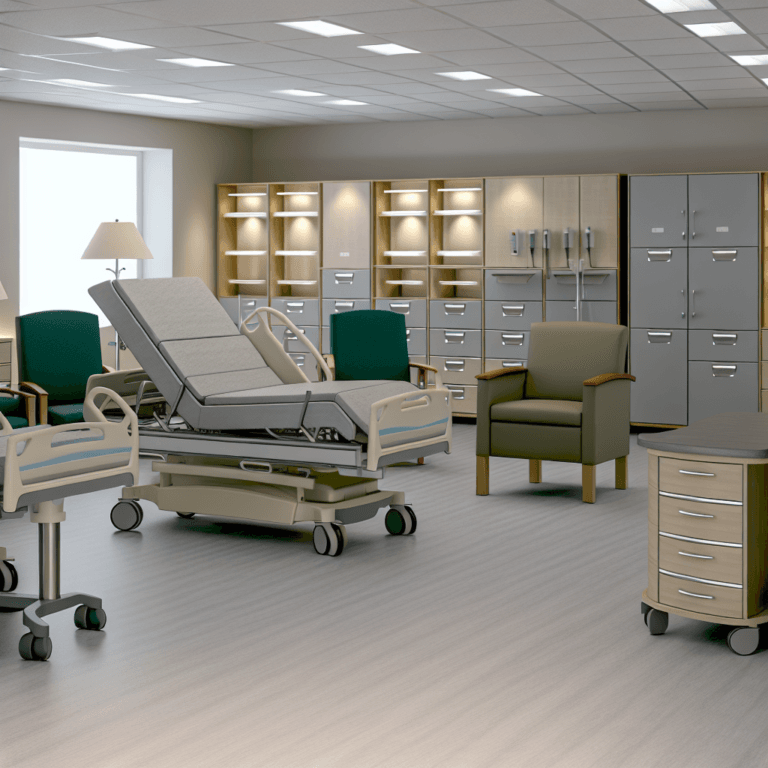Explore the latest trends and forecasts in the healthcare furniture industry market, focusing on innovation and patient comfort.
Healthcare Furniture Industry Market

Table of Contents
Exploring the Healthcare Furniture Industry Market

The healthcare furniture industry plays a crucial role in the overall functionality and efficiency of medical facilities. This market encompasses a wide range of products designed to meet the specific needs of healthcare environments, including hospitals, clinics, and long-term care facilities. The importance of furniture in healthcare settings extends beyond mere functionality; it also impacts patient recovery, staff efficiency, and overall healthcare outcomes. This article delves into the various facets of the healthcare furniture industry, exploring trends, challenges, and future prospects.
Current Market Overview
The global healthcare furniture market has been experiencing significant growth, driven by factors such as the increasing demand for healthcare services, advancements in healthcare infrastructure, and heightened awareness of the importance of ergonomic furniture in promoting health and wellness among patients and healthcare providers. According to a recent market research report, the global healthcare furniture market is expected to reach substantial growth by 2025, expanding at a compound annual growth rate (CAGR) of approximately 6%.
Key Segments of the Healthcare Furniture Market
The healthcare furniture market can be segmented based on product type, material, and end-user:
- Product Type: This includes hospital beds, recliners, cabinets, tables, chairs, and other furniture items specifically designed for healthcare settings.
- Material: Healthcare furniture is made from various materials such as wood, metal, plastics, and composites, each offering different benefits in terms of durability, cleanliness, and aesthetics.
- End-User: The primary users of healthcare furniture are hospitals, clinics, and long-term care facilities, each having unique furniture requirements.
Trends Influencing the Healthcare Furniture Market
Several trends are currently shaping the healthcare furniture industry:
- Ergonomics: There is a growing emphasis on ergonomics in healthcare furniture design to enhance comfort and reduce the risk of injury among patients and staff.
- Infection Control: The COVID-19 pandemic has heightened the focus on infection control, leading to increased demand for furniture that is easy to clean and designed to minimize the spread of pathogens.
- Technology Integration: Modern healthcare furniture often incorporates technology, such as built-in charging stations, electronic monitoring capabilities, and adjustable features controlled via digital interfaces.
- Sustainability: There is an increasing demand for eco-friendly materials and sustainable practices in the manufacturing of healthcare furniture.
Challenges Facing the Healthcare Furniture Market
Despite the growth opportunities, there are several challenges that the healthcare furniture market faces:
- High Costs: The cost of high-quality, durable, and technologically advanced healthcare furniture can be prohibitive for some institutions, particularly in developing countries.
- Regulatory Compliance: Healthcare furniture must comply with numerous regulations and standards, which can vary widely by region and can be complex to navigate.
- Design Complexity: Designing furniture that meets the diverse needs of healthcare providers and patients, while also fitting into various healthcare environments, requires significant expertise and innovation.
Case Studies: Innovations in Healthcare Furniture
Several companies are leading the way in innovative healthcare furniture solutions. For example:
- Hill-Rom: Known for its hospital beds, Hill-Rom has developed the Centrella Smart+ Bed, which is designed to optimize patient safety and comfort while providing caregivers with enhanced usability and efficiency.
- Steelcase Health: This company focuses on creating spaces that enhance patient engagement and comfort. Their Node chair with ShareSurface technology allows clinicians to transition seamlessly between working and interacting with patients and families.
Future Outlook
The future of the healthcare furniture market looks promising with several dynamic changes anticipated. Continued advancements in technology and a deeper understanding of ergonomic principles are expected to drive innovation in this field. Additionally, as global healthcare infrastructure continues to expand and modernize, particularly in emerging economies, the demand for healthcare furniture is expected to surge.
Conclusion
The healthcare furniture industry is a vital component of the medical sector, significantly impacting patient care and healthcare operations. With ongoing advancements in technology and ergonomics, coupled with increasing investments in healthcare infrastructures globally, the market is poised for substantial growth. However, challenges such as high costs and complex regulatory landscapes must be navigated carefully. By continuing to focus on innovation and sustainability, the healthcare furniture industry can meet these challenges and continue to evolve in ways that enhance healthcare environments around the world.








